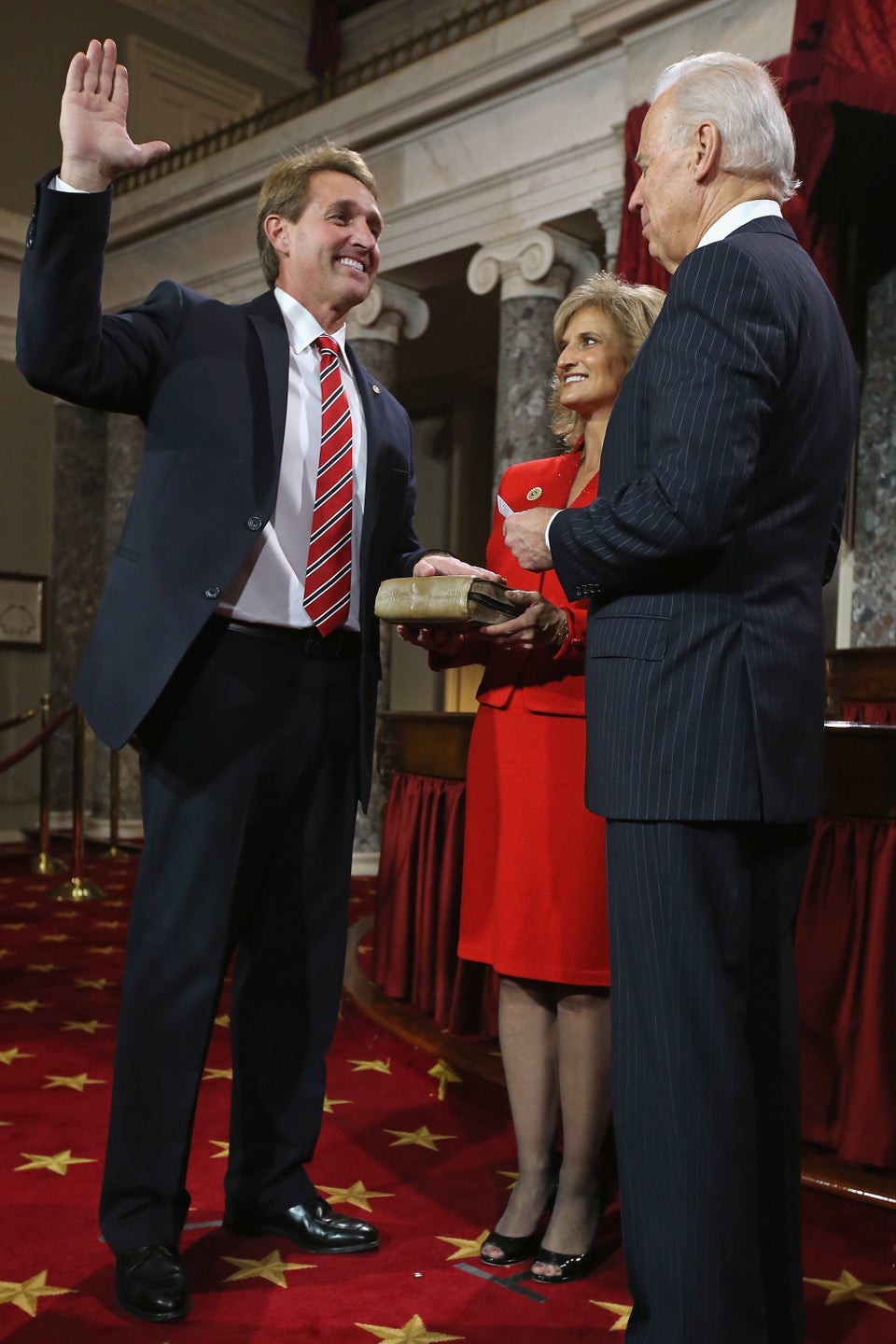
WASHINGTON -- Senate Democrats have settled on a final plan to replace 10 months' worth of sequestration cuts, aides said on Thursday.
The plan, called the American Family Economic Protection Act, pinpoints $120 billion of savings, split evenly between cuts and revenues, that would replace the sequestration-designated cuts to defense and domestic spending until the end of December.
Party leadership sold the package to the caucus during a lunch session on Thursday. Whether it could get the votes of at least five Senate Republicans -- the number needed to overcome a likely filibuster attempt -- remains to be seen.
As designed, the plan would raise $55 billion in revenues over the next 10 months while slashing roughly $55 billion in spending during that same time period. The remaining $10 billion would come from interest savings.
The revenue side is made up of three main policies. The first is the so-called "Buffett Rule," which would set a minimum 30 percent tax rate phased in on incomes between $1 million and $2 million. Aides say that such a proposal would raise more than $50 billion (though last week, they had estimated that amount would be a bit lower).
The rest of the revenue would come from eliminating businesses' ability to take deductions by relocating facilities overseas, raising an estimated $200 million, and from a provision closing the tar sands loophole, raising $1.7 billion. Under current law, there is an eight-cent-per-barrel tax on oil, both imported and domestically produced. That money supports an oil spill liability trust fund used to pay for cleanup after oil spills. The tax, however, isn't levied on oil produced from tar sands, even though producers of that oil have access to the liability trust fund should a spill occur. The Senate Democrats' sequestration plan would change that.
On the spending side, Senate Democrats are pinpointing two areas in which to make cuts. The first is defense spending, though the specifics aren't yet clear. The second is agriculture subsidies, with lawmakers specifically targeting direct payments to large farmers. A Senate aide projected the savings at $27.5 billion for each.
Several Republican lawmakers have expressed openness to revenue hikes as part of a larger proposal to replace the looming sequestration, which, if no action is taken, would cut defense, Medicare provider and discretionary spending by $1 trillion over the next decade. But their position has always been that the revenue-raisers would be need to replace the sequester's defense cuts. The Senate Democratic proposal leaves defense cuts in while still adding revenue-raisers, making it a likely non-starter among Republicans.
Still, the plan represents the first attempt by the Senate to find a replacement. House Speaker John Boehner (R-Ohio) has said he won't act unless the Senate moves first. Sequestration is set to begin on March 1.
UPDATE: 3:15 p.m. -- The Democratic Senate aide sent HuffPost a fact sheet about the bill.
The American Family Economic Protection Act
The Democratic proposal to replace the first year of sequestration with a balanced approach that works for middle class families and the economy
The American Family Economic Protection Act would replace sequestration through January 2, 2014 with an equal amount of balanced and responsible deficit reduction. Following the precedent set in the bipartisan year-end deal that replaced the first two months of sequestration, the Democratic proposal includes half new revenue and half responsible spending cuts, with half of the spending cuts coming on the defense side in a way the Pentagon can implement responsibly, and the other half coming from smart reductions to domestic spending.
This proposal would protect the economy from the shock of the scheduled automatic cuts that would threaten jobs and weaken the economic security of the middle class. It would make sure families and communities are protected from the devastating cuts to education, law enforcement, food safety, and so many other critical programs impacted by sequestration. And it would give the Pentagon time to make modest spending cuts responsibly as they draw down troops from overseas.
Sequestration was included in the bipartisan Budget Control Act in order to push both sides to compromise and to work together on a balanced replacement. The American people have made it clear that they favor a balanced approach to deficit reduction that includes responsible spending cuts and new revenue from those who can afford it most. The Democratic proposal delivers that, while the only ideas that Republicans have come out with so far would protect the rich from paying a penny more in taxes and would be even worse for seniors and families in the long run.
The American Family Economic Protection Act includes:
New revenue from the wealthiest Americans and biggest corporations: $55 billion:
The American Family Economic Protection Act includes the Buffett Rule, which reduces the deficit by $53.6 billion by making sure that taxpayers with a gross adjusted income above $1 million cannot pay tax at a lower effective tax rate than middle class families. Specifically, it would require these taxpayers to pay a 30 percent tax on all of their adjusted gross income (less charitable contributions), phased in between $1 million and $2 million. The proposal also eliminates a tax break that encourages companies to ship job overseas by denying tax deductions for costs associated with outsourcing, reducing the deficit by $200 million. And it eliminates a special tax loophole now enjoyed by the oil industry by including oil from tar sands among the petroleum products that are subject to taxes that support the oil spill liability trust fund, which would reduce the deficit by $1.7 billion.
Responsible defense cuts: $27.5 billion:
The American Family Economic Protection Act includes modest reductions in the overall level of defense spending phased in responsibly to time with the troop drawdown in Afghanistan in 2015, and continuing through 2021. The reduction would be about $3 billion in Fiscal Years 2015 and 2016, and then would rise slowly to a high of about $5 billion in Fiscal Year 2021.
Responsible domestic cuts: $27.5 billion:
The American Family Economic Protection Act saves $27.5 billion over 10 years by ending direct payments, which are currently provided regardless of yields, prices, or farm income.
UPDATE: 4:15 p.m. -- House Democrats, meanwhile, have introduced a sequestration replacement bill of their own. Dubbed the "Stop the Sequester Job Loss Now Act" and introduced by Rep. Chris Van Hollen (D-Md.), the bill would repeal subsidies for oil and gas companies, cut farm subsidies and institute the Buffett Rule to pay for a 10-month replacement of the sequester. Details of the bill can be found here.

